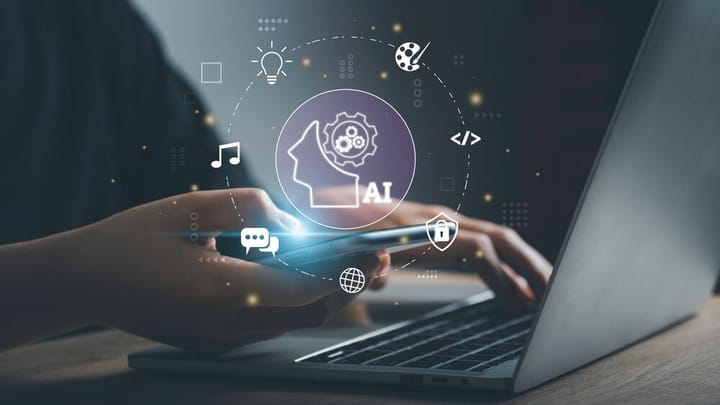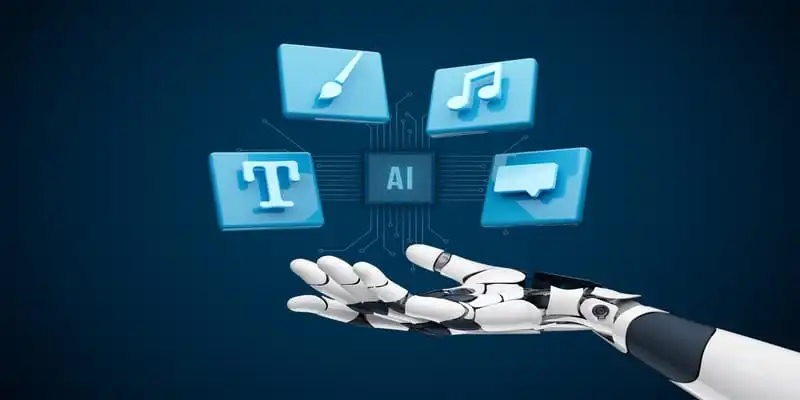How to Mine Bitcoin? A Complete Beginner Guide
Do you want to know how to mine Bitcoin? If so, you're not alone. Learning how this exciting digital currency is created is only one of the benefits of mining Bitcoin. This article will cover all the basics: what bitcoin mining is, why people mine bitcoins, and how you can get started!
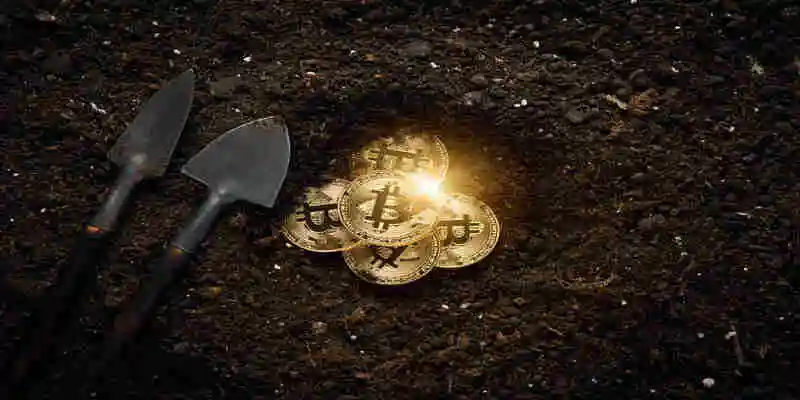
This article should be beneficial if you've ever wondered how Bitcoin transactions are maintained safe and consistent on the network or how long it takes to mine a Bitcoin.
1. What Does BTC Mining Mean?
The foundation supporting the stability, efficiency, and prosperity of the Bitcoin system is bitcoin mining. It is based on a governance technique known as a supplied proof-of-work (PoW), which is intended to encourage involvement and support the growth, security, and decentralization of the Bitcoin network.
Even though there isn't any underground or cave digging, the issuing of bitcoin is referred to as mining since it reminds people of mining for gold and other minerals. It may be summed up as the procedure that adds new transactions to the Bitcoin time-chain and puts new bitcoin into circulation (also called a blockchain).
These two seemingly straightforward acts are made possible by a powerful processing system that operates by the strict Bitcoin protocol and authority to provide the reliable, decentralized, and creative economic system we are familiar with today.
This article attempts to dispel myths about difficulties in mining Bitcoin economic framework by providing complete information and compelling arguments.
2. A Summary of Bitcoin Mining's History
Tens of thousands of nodes (computers) make up the peer-to-peer network that Bitcoin depends on to operate, along with “mining nodes” and “user nodes”. These nodes serve as the building blocks of a global compensation network that operates without the guidance of a centralized authority and transports trillions of dollars annually.
There were a few differences when Satoshi Nakamoto introduced Bitcoin in 2009 between operating a Bitcoin node and mining bitcoins. Since many individuals who maintained nodes on their devices could also mine bitcoin economically on the same processors, node operators and miners were therefore recognized as the same players in the network.
The mining organization that bitcoin has evolved into in recent years, thriving along with the bitcoin rate and the spur to mine, was once more of a do-it-yourself project.
The lack of pre-mined bitcoins, or coins generated before a project's inception, is one of the major distinctions between Bitcoin and most other cryptocurrencies.
Satoshi started the network before mining bitcoins to prevent himself from having the edge over anybody wishing to use the system.
He mined the first block, often known as Genesis block or block 0, having 50 bitcoins when the network went live on January 3, 2009. Being the first miner on Bitcoin network at the time, Satoshi used a typical desktop computer to produce blocks.

3. A Remedy for Transaction Fraud
By following predetermined rules, bitcoin mining produces new blocks that are added to the ledger. The member nodes of the network must concur that the users publicly recognized by their cryptographic addresses are the rightful proprietors of any bitcoin balances.
For the Bitcoin network, miners carry out a coordinating role that, in conventional payment systems, is handled by a responsible third party, such as a bank or other financial institution. Bitcoin must prevent money from being double-spent or used by someone other than its owner to do away with the necessity of a reliable third party.
A cryptographic innovation from the 1970s called digital signatures keeps unauthorized operators from using other people's currency. A private-public key pair is a reliable form of possession verification that restricts access to bitcoin transactions to the private key owner.
Digital signatures, however, do not ensure that the bitcoin that was received as payment was not also used for other things (double-spending problem). Adam Back's hash-based Proof of Work (PoW) technology, which enables blocks of transactions to be chronologically sorted and for the network to obtain consensus on the ledger's present state by pursuing the longest chain of blocks, was employed by Satoshi to address this issue.
This strategy defends the blockchain from attacks since transactions can only be undone if an adversarial actor performs the PoW for all preceding blocks again. As new blocks are continuously added to the chain, it is virtually impossible for such individuals to catch up.
4. Explaining the Technical Aspects of Bitcoin Mining
The more technical parts of Bitcoin mining will be covered in this section, along with definitions of terminology like hashrate and processing power. It will also examine the benefits of a greater hashrate inside the Bitcoin network and the required mining power.
4.1. What is meant by hashrate?
A Bitcoin mining device's hashrate is the maximum number of guesses it can produce in a particular time frame. It's used to gauge how much processing power each member of the Bitcoin network is putting into mining the cryptocurrency.
4.2. Why is having a higher hashrate crucial?
One is more likely to mine more bitcoins if their hashrate is greater. Since more machines are mining on the Bitcoin network, which has a high hashrate, mining the cryptocurrency becomes more challenging. A greater hashrate is advantageous since it makes the network more secure because it is also used to gauge how well-functioning the Bitcoin network is.
When millions of devices are operating, controlling at least 51% of the total hashrate would be necessary for a bad actor to attack the Bitcoin network, which would be very expensive. The incentive for attacking the Bitcoin network would be far lower than the effort required.
4.3. How is the hashrate calculated?
Hashrate is measured in five different ways: in Kilohashes, Megahashes, Gigahashes, Terahashes, and Petahashes. The most used measure is Terahash (TH/s), which means trillions of Hashes per second. Since few computers were mining Bitcoin at first, you could mine some of them using your CPU, which has a processing speed of about 5 MH/s.
However, when more computers joined, the complexity increased, and GPUs, which could output at most minuscule 68 MH/s, played the role of CPUs. Then came FPGAs, which had an 800 MH/s speed limit until being replaced by Application Specific Integrated Circuits (ASICs). A basic ASIC could only process up to 1.5 TH/s at first, a long cry from the 110 TH/s that modern computers are capable of.
4.4. Processor and graphics card power
Processing power measures how much valuable work specific computing equipment can do. When mining Bitcoin, a given machine's higher processing power also means a better hashrate.
Since there weren't many people mining BTC at first and the hashrate was low, it was possible to participate in business using a typical multicore CPU successfully. However, as more users joined the network a year later, in 2010, it was found that graphics cards, mainly used to play video games, had greater processing power and would provide better returns. The software for GPU-based Bitcoin mining was made available in October 2010.
Remember that at this time, mining was carried out by crypto geeks and enthusiasts, as Bitcoin had no actual value. It's interesting to note that Lazlo Hanyecz, who in May 2010 spent 10,000 BTC on two huge pizzas, was the first to assign Bitcoin its first worth. You can calculate that.
The number of miners increased along with the bitcoin community, which raised the difficulty.
Field-programmable gate arrays (FPGAs), which used three times less power to do the same work than a straightforward GPU configuration, had become mainstream by June 2011. But more specialized mining equipment took little time to enter the market. Application-specific integrated circuits (ASICs) replaced FPGAs as Bitcoin mining transitioned from a hobby to a business. FPGAs needed customization after purchase, but ASICs were explicitly designed for bitcoin mining, which is why they have remained the industry standard.
Using the typical power consumption offered by ASIC miners, it is currently estimated that it takes around 72,000 gigawatts (72 terawatts) to mine a single bitcoin. Given that the daily hashrate is approximately 133.732 Ehash/s, you'll need extremely powerful ASIC and power-efficient devices to complete the task.
5. Environment Needed to Mine Bitcoin
Before choosing which ASIC miner to buy, you must decide if you have the necessary conditions to operate a mining business. The four fundamental needs are as follows:
Power Requirement: Most contemporary miners need a 220V plug. However, many residential dwellings and flats only have standard 110V outlets except for a few items. One solution is to engage a qualified electrician to install a 220V outlet if you don't already have any 220V outlets. Any do-it-yourself solution puts your safety in danger and is not advised. Sadly, employing a 110V to 220V converter is ineffective.
Internet Connection: A reliable internet connection is necessary for every miner. The router's ethernet port on an Ethernet cable is the ideal place to plug this into. Fortunately, these connections are available in great lengths so that the router can be far from the miner. WiFi is another option, although it could be more dependable.

Cooling/ Air Flow: ASIC miners produce heat; hence, air flow and cooling are essential. The first law of thermodynamics states that heat is produced instead of being eliminated when a miner utilizes energy. It indicates that enough ventilation and fans are required to assist air circulation. Even better, you can use the heat in another way to heat your garage and basement throughout the winter.
Noise Reduction: Miners not only produce a lot of heat but also make much noise. Noise levels from a single machine range from 70 to 80 decibels (dB). Most miners can even achieve 90 dB. It is like having your lawnmower inside your house. It is advised to soundproof your ASICs by placing them in an insulated container or operating them where the noise won't annoy you or your neighbors.
How to mine bitcoin at home? The truth is that most individuals find running mines at home to be disruptive and labor-intensive. Plug and play don't quite cut it. So, it would help if you kept these things in mind to start mining on a modest scale.
A different choice is to buy your miners and choose an industrial area to house them. There are several hosting facilities worldwide where you can find power at lower costs than in a normal residential region.
6. Problem with Proof-Of-Work
The foundation of the Bitcoin network is proof of work. Without it, every network user might alter the blockchain to their advantage. PoW ensures that the network works properly without a central authority settling conflicts. The proof of work system accomplishes two tasks: it assures that each user has access to the same copy of the blockchain and prevents double spending, a recognized problem for payment networks without central coordination bodies. Hash functions, one-way mathematical operations that convert a string of data into a fixed-length integer called a hash, are used in the Bitcoin PoW algorithm.
Even a small alteration to the data, such as adding a comma, completely alters the hash. Bitcoin uses SHA-256, developed by the National Security Agency in 2001, and produces values that are 256 bits long. It is also seen as being particularly secured. The process listed below is often used continually by miners to look for appropriate blocks:
- Increment a random number in the block header known as a nonce.
- Take a hash of the resultant block header.
- Determine if the block header's hash, when expressed as a number, is less than a predetermined target value.
The network will reject the block if the hash value of the block header is greater than the desired value. The PoW difficulty is locating a block with a sufficiently low hash value.
7. A Feature that Adjusts Difficulty
Bitcoin's programmed supply structure is built on difficulty adjustment and reward halving. The Bitcoin network is set up to produce a block once every 10 minutes, on average. Satoshi intentionally picked this feature to strike a balance between quick confirmation times and the amount of labor lost because of chain splits and invalid blocks.
It is taken care of by regularly changing the hash target value for blocks, which is done through difficulty adjustments. The rate of block generation will increase as more miners sign up. When the block creation rate rises, the mining difficulty rises in response, bringing the block creation rate back to the targeted 10-minute average. In reality, Bitcoin nodes calculate a new difficulty depending on the time it took to mine the previous 2,016 blocks for every 2,016 blocks (usually created every two weeks, with each block requiring about 10 minutes to confirm).
The time it took to mine the previous 2,016 blocks, which were typically generated every two weeks and confirmed in 10 minutes, is how Bitcoin nodes determine a new difficulty.
Since the genesis block's difficulty was simply 1, it was probably immediately mined. Block mining difficulty is currently 30 trillion and rising in comparison. This measurement shows that to remain competitive, highly specialized ASICS mining gear must do, on average, around 30 trillion hashes before discovering a legitimate block.
8. Block Reward
A lot of expensive processing power is needed to solve the PoW problem. Bitcoin offers two payouts for each successfully mined block to entice users to put their resources into mining.
- A block reward (subsidy)
- Transaction fees
According to the Bitcoin algorithm, the block reward is now fixed at 6.25 bitcoin per block and decreases by half every 210,000 blocks (or roughly every four years). Reward halving guarantee that the creation of bitcoin is constant over the medium term but exhausts itself completely over the long run, ensuring that the total quantity of bitcoin is eventually limited.
Because of this, bitcoin is sometimes referred to as the "hardest asset" in the world. Even the quantity of gold has increased from 1% to 2% a year since 1900, and unlike Bitcoin's regular programmed supply, there is no guarantee that this growth rate will stay the same. The reward will eventually cease to exist once 21 million bitcoins have been mined by the year 2140. After that, Bitcoin users' transaction fees will be the only thing used to compensate block miners for including their transactions in blocks.
9. Step by Step How to Mine Bitcoin: Tips For Mining Bitcoin
Every 10 minutes, a new Bitcoin block is created by bitcoin miners using mining hardware. These are the fundamental measures to take while mining bitcoins alone. Anyone with a computer and a fast internet connection can mine Bitcoin, but it might not be profitable.
9.1. Select And Configure Your Bitcoin Mining Hardware
How to mine bitcoin on PC? Start by deciding on the mining equipment you'll employ. You can use an old PC or laptop, but unless you invest in more potent equipment made expressly for Bitcoin mining, you won't make any money. An illustration of well-liked cryptocurrency mining technology is Antminer, produced by Bitmain. To save money, you can find secondhand mining hardware online.
It should be noted that many mining rigs use the Linux operating system and that setting them up and running requires substantial computer expertise. You should allow more time for studying and troubleshooting if you are new to advanced computers.
9.2. Establish a Specific Bitcoin Wallet
You will only get paid when you properly authenticate a Bitcoin block and only to a working Bitcoin wallet. If you want to mine cryptocurrencies, consider setting up a separate wallet from any other Bitcoin assets. A variety of Bitcoin wallets, each with varied levels of comfort and security, may be made by you. To increase security as a Bitcoin miner, you could create a hardware wallet, which is the safest type.
9.3. Set Up Your Mining Machine
You may install and set up your Bitcoin mining software after your mining gear is ready, and you have a bitcoin wallet. It also demands some technical know-how, especially if you combine many hardware miners to increase your mining capability for bitcoin.
Some mining equipment has a software product in the form of a graphical user interface (GUI), which enables mouse-based hardware configuration. Other mining equipment need command-line proficiency, another high-level computer competency frequently employed by software developers and programmers. When choosing the Bitcoin mining software for your gear, take some time to consider what meets your needs the best.
9.4. Begin Mining
You may begin mining as soon as you download a local copy of the blockchain for the cryptocurrency you wish to mine. You can take a break once you click the right button to start mining officially. Your mining equipment handles the labor-intensive process of mining cryptocurrency for you. You don't have to perform any more work yourself, but you should check in from time to time to ensure that your rig is still mining. Your mining equipment may continuously generate cryptocurrency even if you are sleeping or at another work.
10. How Much Can Someone Mine Bitcoin for?
Solo Bitcoin miners could have trouble turning a profit, but Bitcoin mining pools have a much higher chance of doing so. However, several factors affect how much a Bitcoin miner may make.
How much does it cost to mine bitcoin? Bitcoin mining must generate enough revenue to cover the cost of energy and the original cost of the mining equipment to be profitable. Bitcoin miners concentrate on low-cost power, high-efficiency technology, and reliable Bitcoin mining pools to maximize their chances of success.
Taxes on Bitcoin mining are another factor to consider. Although it is not a given that a miner will earn a profit, you might have to pay tax depending on the jurisdiction.
The profitability of a Bitcoin mining operation will ultimately depend on the price of Bitcoin. Since power and mining hardware will be paid for with fiat money, Bitcoin's price must remain high enough for benefits to exceed expenses.
11. Bitcoin Mining Expenses
How long does it take to mine 1 bitcoin? The cost of profitable Bitcoin mining equipment has significantly grown due to greater competition. Mining rigs have had to get more powerful as massive mining farms boost demand and take over the Bitcoin mining market, raising the price. A properly constructed mining setup may cost up to $15,000, but inexpensive ASIC miners can be purchased for as little as $500. It takes more than a year to return your original investment.
A Bitcoin mining gear must be powered after it has been installed. In an ideal world, power costs are negligible, but expenses may quickly mount if a Bitcoin mining setup is active every day. Within your own country, the price of power varies from area to region.
As was previously said, every miner must mine Bitcoin through a Bitcoin mining pool to have a chance of making a profit. However, joining a Bitcoin mining pool has a fee. Each pool's operator will impose a percentage fee for network usage. These pool fees are deducted from the mined Bitcoin and generally vary from 0.1% to 2.5%.
The charge incurred while selling any Bitcoin is the final expense to consider. A charge must be paid to the cryptocurrency exchange or broker used to conduct the transaction if a user intends to sell every Bitcoin mined. These costs will vary across exchangers and may be negligible, but they should still be considered when calculating the final price.
12. How to Bitcoin Mine? Home Alternative Ways
You don't need to set up your Bitcoin mining apparatus to profit from mining. There are further methods to include mining in your portfolio.
12.1. How to Mine Bitcoins via Online Cloud Mining
With cloud mining, you may use cloud computing to pay someone else to do your mining. Cloud miners engage in contracts with mining firms that provide them access to mining equipment remotely situated in data centers. Some cloud mining firms can also oversee your mining activities.
12.1.1. The Benefits of Cloud Mining
- You are not in charge of the tools. When anything breaks, you frequently don't have to replace or fix it (though you should always check the fine language in a cloud mining contract). The business may demand payment from you for any equipment damage!).
- Only by investing hundreds or millions of dollars in mining equipment can anyone earn money by mining bitcoin. Additionally, this implies that you are free from dealing with the heat or noise at your house or any other suitable area.
- The last benefit is that you can be knowledgeable about mining cryptocurrencies. You don't need this Bitcoin mining tutorial if you want to cloud mine! Just go to a trustworthy platform, sign up, and begin mining.
12.1.2. Disadvantages of Cloud Mining
- You make a down payment. You could be forced to continue mining at a loss if the price of Bitcoin falls significantly and doesn't rise again (if it ever does). You assume all risk because the cloud mining operator will always make money.
- The cloud mining provider's mining equipment and software cannot be changed or upgraded.
- Hackers frequently target firms that use cloud mining. In July 2017, Genesis Mining experienced a hack. The hot wallet of the business was moved from Bitcoin to an external wallet.
You should purchase some Bitcoin with the money you would have spent on a cloud mining contract if you want to obtain cryptocurrency but want to avoid purchasing expensive mining equipment. In that manner, you can exit your investment if the market experiences a sharp decline. You won't be forced to stay in a mining contract that loses value daily.
How to mine bitcoin securely with cloud mining technique?
Due to the likelihood that cloud mining operations may be fraudulent, cloud mining has some risks. There have been established cloud mining businesses that take Bitcoin as payment and give investors returns in Bitcoin.
Some of these businesses, however, are ponzi scams that pay off early investors using the deposits of later investors.
Be wary of its legitimacy if a cloud mining company promises excessive profits. If they promise big profits, it is helpful to inquire about the business using the following questions: Why do they need my money if they are earning such great returns? Instead of giving me a return on my investment, why don't they mine the Bitcoin and keep it?
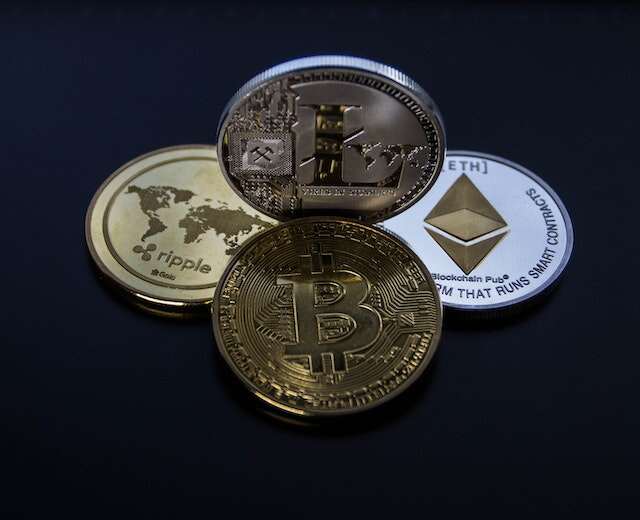
There are secure investing options for Bitcoin cloud mining. The simplest way to tell whether an opportunity is a scam is to watch the profits they are offering.
12.2. Put Money into A Bitcoin Mining Business
Also, consider funding publicly traded businesses specializing in bitcoin mining. A Bitcoin mining business that trades openly on the stock market is Riot Blockchain.
12.3. Change Your Cryptocurrency Mining
Other cryptocurrencies are mined besides Bitcoin. Ethereum, Monero, Litecoin, and many other cryptocurrencies are available for mining. Each coin has its own set of mining regulations and different economics and levels of competition, which may result in higher cryptocurrency returns than mining Bitcoin.
13. Calculating the Profitability of Bitcoin Mining
How to make my bitcoin miner more effective? Once you have all this data, you can use a Bitcoin mining profitability calculator to estimate your daily profit rate and obtain a general indication of your profitability.
The calculators on CryptoCompare, CoinWarz, and NiceHash are excellent and useful. However, if you're truly interested in getting into cryptocurrency mining and would like to perform the math by hand, here are the steps:
- Divide your hash rate by the total.
- Multiply the block reward by 144. (Number of Bitcoin blocks in a day).
- Multiply the outcome of step one by the outcome of step two.
- Multiply the outcome of step 3 by the current Bitcoin price. It is what you are paid.
- Multiply the power used by 1,000. (To convert watts to kilowatts).
- 24 (hours in a day) times the response from step 5.
- Multiply the result from step 6 by the cost per kWh of electricity. Before mining pool fees, this is your cost.
- To calculate your profit before mining costs, subtract the result from step 7 from the answer from step 4.
- Subtract the mining cost from the solution for step 8. Your profit is this.
Remember that this strategy does not account for the one-time cost of purchasing a mining machine. You could ask if it's legal to generate money in this method after figuring out how much you'll earn from mining Bitcoin.
14. Is Mining Bitcoin Legal?
Bitcoin mining is unquestionably legal in most of the United States if you reside there. However, it could already have been outlawed in some towns or states, or they may do so soon.
According to CNBC, mining bitcoins is prohibited in Plattsburgh, New York, and the state government is debating legislation to outlaw the practice entirely throughout the state. But Bitcoin mining is permitted in most American states.
You could break federal or state cryptocurrency laws if you sell your Bitcoin mining profits to anybody other than a registered exchange. Taxes must be paid on the cryptocurrency you make from mining as well.
15. How to Mine for Bitcoin to Make Money?
A miner's profit and income are significantly influenced by market circumstances and the existence of other miners in addition to the gear they use. During bull markets, the price of Bitcoin may soar higher, increasing the monetary value of the BTC they generate.
However, bull market inflows are balanced out by additional Bitcoin miners who perceive the rising earnings and buy more equipment to access the revenue stream; each miner now produces less Bitcoin than they did previously.
The income eventually tends toward an equilibrium point when less productive miners earn less than they spend on power, turning off equipment and letting others earn more Bitcoin. It typically takes place later.
There is a lag since ASICs can only sometimes be created rapidly enough to offset an increase in the price of bitcoin.
In a downturn market, the reverse rule applies. Revenue declines once many miners start to switch off their equipment. Existing Bitcoin miners must pick a location and hardware setup that will provide them the competitive advantage they need to stay in business. Because more advanced equipment can utterly stifle the revenues of older miners, they must continually maintain and reinvest their capital.
16. A Complete Guide to How to Mine Bitcoin
16.1. How does a Bitcoin mining pool work?
Depending on the mining pool on well-known pool websites, you may find thorough instructions for setting up the software and hardware. You may quickly review some of the various platforms by using these top bitcoin mining ones.
16.2. Does it cost anything to start mining?
No. because mining is a real-world expense. Without unique gear and with the obvious power costs, you can’t do it profitably.
16.3. How much does mining Bitcoin cost?
The price is based on the earnings you hope to make. If you have the required hardware and real estate, the only expense is the cost of energy. In addition, there are expenses for the necessary real estate and the accompanying cooling system and mining equipment. You will realize it demands a substantial investment when you put the commissions of the mining service in.
16.4. How do contracts for the cloud mining of bitcoin operate?
A corporation that operates a warehouse (sometimes referred to as a mining farm) full of mining equipment and allows customers to acquire mining capacity or a specific quantity of hashrate is said to be engaged in bitcoin cloud mining, also known as cloud hashing. You will receive a portion of payments from the cloud mining firm for any revenue your hashing power generates based on the quantity of power you purchase.
16.5. Is mining bitcoin worth it?
Despite the potential for profit from Bitcoin mining, the electricity expenditures and the initial price of your mining hardware may hurt your finances. You could have to spend more money to mine Bitcoin than the greatest amount of money you can if you use the wrong hardware or need access to much inexpensive power.
16.6. Why use so much electricity in mining?
Anyone may easily run a mining application from their computer or laptop in the early days of Bitcoin. However, the difficulty of the mining algorithm increased as the network became larger and more individuals became interested in mining.
It is due to Bitcoin's software's goal of discovering a new block every 10 minutes. The likelihood that the proper hash will be solved more quickly grows with the number of miners, which makes it harder to achieve the original 10-minute target. Imagine if the network's mining capacity increased dozens or millions of times. That many new devices are using a lot of energy.
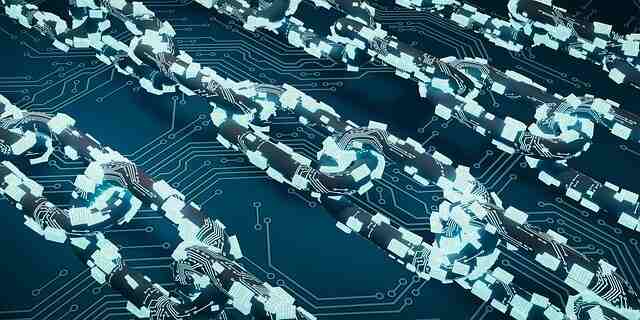
16.7. How to mine bitcoin with GPU?
The high resource requirements of mining blockchains may be highly taxing on your GPU and other mining devices. GPUs blowing up or mining rigs catching fire are not unheard-of occurrences. Nevertheless, it is normally safe to keep your equipment operating at a reasonable speed and with enough power provided.
16.8. How to mine bitcoin on Android or iPhone?
Can your iPhone mine bitcoin? The answer is no. To be competitive, bitcoin mining needs a lot of computational power and electricity. Even if a mobile device is a member of a mining pool, running a miner on it will probably not bring in any money.
17. How to Mine Bitcoin Aspects and Threats
The management of high-power devices like ASICs entails technical risks and the monetary risk of not making a profit. Proper ventilation is necessary to prevent the components of the mining equipment from overheating and burning out. One ASIC is most likely the most potent device in your house or business, dissipating all the miner's electrical usage as heat into its surroundings.
How to mine bitcoins at home also implies that when mining bitcoins, you should carefully evaluate the limitations of your electrical grid. The electrical system in your home has a maximum power rating, and each socket also has a rating. Overstepping those boundaries could lead to continual outages or electrical fires. See a professional if you want to know if your Bitcoin mining setup is secure.
To maintain the mining equipment in good condition, routine maintenance against dust and other environmental conditions is also necessary. ASICs might lose functionality sooner than anticipated without adequate maintenance, even though failures are uncommon.
Even if individual ASICs fail, the possibility of becoming outdated poses the biggest risk to their profitability. More productive miners will ultimately displace older machines. Before becoming unprofitable in any power pricing scenario, historical generations of miners like the Bitmain S9, introduced around 2016, lasted around four years (except zero). However, it is highly uncertain how quickly computing technology will evolve.
How to mine bitcoin efficiently? The mining of bitcoins is much like any other business. There is a chance for both benefits and hazards. This tutorial should have been a good beginning point for further analyzing both.
17.1. Bitcoin Pros
- You can make money by mining because you are paid in bitcoins.
- You support the network by assisting in transaction verification, preserving this decentralized alternative to banks.
- It can be profitable if you mine in locations with inexpensive electricity.
- The mining equipment retains its value and can be sold if one stops mining.
- It is simple to use. There is no trouble; you only need to set up a wallet and purchase a contract.
- No noise, ventilation, heating issues, or power costs exist.
When you decide to exit the market, there will be no equipment to take up room in your home or a problem with selling it. There is no downtime, fire danger, and maintenance costs.
17.2. Bitcoin Cons
- Many studies are needed to prevent mining pool frauds because the process is incredibly complicated, energy-intensive, and expensive to run the machines needed to mine bitcoin profitably.
- Losses may result if bitcoin prices fall; cloud mining contracts are expensive.
- Ninety-nine percent of cloud mining companies are scams. When thinking about cloud mining contracts, this can be the most crucial consideration. ONLY purchase them from trustworthy businesses like Genesis Mining and Hashflare.
- They are regarded as the most reliable cloud mining firms out there and have been selling contracts for several years on the market.
- Lower revenue. It is an obvious choice. You might anticipate reduced returns every time you outsource your labor and risk.
- If the price of bitcoin falls too low, Bitcoin mining contracts may be able to halt operations or rewards.
18. How to Mine Bitcoin? Conclusion
In order to validate and authenticate new transactions made on the blockchain and stop fraudulent users from making numerous payments, the "mining" process for bitcoin is crucial. It's also how fresh bitcoins are introduced into the system. Proof of work (PoW), which is inherently energy-intensive and based on a difficult issue, is required for the project. However, this energy is reflected in the value of bitcoins and its system, which upholds the stability, security, and dependability of this decentralized system.

